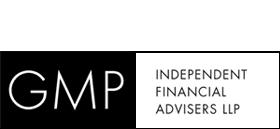Personal Accounts
October 1st, 2009
Personal Accounts – Drafts of further proposals
On Friday 28th September, the Government issued its 3rd consultation document covering many of the more detailed proposals Personal Accounts covered in the Pensions Act 2008. The consultation periods runs from 24th September to 17th December 2009, on one paper and to the 5th November on the 2nd paper. These papers outlines proposed measures to manage the burdens on businesses, such as employers being able to phase in contributions over time, automatic enrolment (and possible re-enrolment) of individuals, maintaining qualifying pension schemes and the 19 day rule. The papers also cover the quality requirements for all pension schemes, self certification and the use of default options in the workplace including SIPPS. It is proposed that these regulations will come into force from October 2012 and will now be phased in over 5 years.
Introduction:
-Personal Accounts are set to be introduced in October 2012 -All employers will have a duty to automatically enrol all eligible employees into personal accounts from this date -Eligible employees are those aged between 22 and State Pension Age who are earning between £5,035 per annum and £33,540 per annum (in 2006/2007 earnings terms) -Employers can choose a qualifying workplace pension scheme, if they wish to discharge this duty -A qualifying scheme can be occupational or personal (GSHP, GPP or SIPP) -Contributions to personal accounts will be phased in
Qualifying Schemes:
Workplace personal pensions must, in order to be a classed as a ‘qualifying scheme’, be registered under Chapter 2 of Part 4 of the Finance Act and must meet the quality requirements for money purchase schemes, being: -All benefits provided to the employee under the scheme must be money purchase benefits -The employer must pay contributions equal to or more than 3% of the amount of the employees qualifying earnings in the relevant pay reference period. -The employee must pay the shortfall between the employers contribution and 8% of the employees qualifying earnings in the relevant reference period; and -There must be direct payment arrangements between employee/employer. In addition, there must be no provision by the scheme, preventing the employer to offer access to the employee and there will be no provision for a scheme which requires the employee to express a choice in remaining an active member.
Default Options:
Given that individuals cannot be required to make an active choice whilst being automatically enrolled, all schemes must have a default fund in place. Default options should be competitively priced and below the stakeholder price cap. The default option should have a de-risking (i.e. lifestyling) element which should take into account the retirement profile of members. Default Options (SIPP only): Where employees are automatically enrolled into a (Group) SIPP, the default fund should: -Resemble that of a GPP; -Be priced at levels comparable to those found in a typical GPP; -Comply with the guidance on the government views as good practice when designating a default fund. Qualifying Earnings: £5,035 per annum and £33,540 per annum (in 2006/2007 earnings terms) Pay Reference Periods: Pay reference periods are simply prescribed periods of time that are used to assist an employer in calculating the contribution due. The paper proposes setting a pay reference period of 12 months to allow employers to assess at year end if the pension contributions paid meet the minimum requirements. If not, then an annual top up would be due. This will assist schemes through the process of annual reconciliation and means that schemes will be able to continue to use their own definition of pensionable pay in the interim. The consultation document proposes a phasing of the introduction to PA to ensure smooth roll out and to help employers adjust gradually to the reforms. Whilst the Government did consider the ‘big bang’ method of all employers going live on day 1 as well as geographical staging, it is likely that PADA and TPR would be under immense strain to monitor. Even phasing in over a 3-5 years period will mean some 1,000 employees will be brought on in each month. Starting the transition will be the large employers finishing with the micro employer. They are also proposing (to ensure systems and controls are working) to bring in a small group of randomly selected employers who have less than 50 staff. There will be between 25/30 different groups of employers. It is disappointing that the Government are suggesting this as the introduction, as many larger firms will already have some form of scheme in place, so employees working for small companies seem to bear the brunt of the proposals. Let’s hope industry consensus may be able to change this before the final legislation and finer details are finally laid in Parliament, next year.
Sizing of Employer:
This will be dictated by PAYE data held by HMRC. -Transition for final salary schemes (DB) is quite complex and has to operate very differently to money purchase schemes, for this reason employers who have final salary schemes will not be affected by auto enrolment until the end of the staging period has ended.
Maximising existing good provision:
The paper outlines proposals for scheme quality tests and outlines a certification process when schemes of a good calibre are already in force. Money Purchase Schemes (existing): Employers will be able to self certify. At least 8% of contributions of qualifying earnings must be made. Employers will be able to self certify stating they are on track. Employers will need to review the certificate at the end of its term to ensure the scheme met its quality requirements. Employers in this scenario would not be required to make up any shortfall provided the shortfall does not exceed 5% of the expected contributions under the Act and that no more than 10% of employees suffer a slight shortfall. The papers also stresses that no employee suffers a shortfall more than once in 2 years. Final Salary Schemes (existing): In order to qualify, an existing final salary scheme will need to have a contracting out certificate in force as this is taken as evidence that the scheme already meets the ‘reference scheme test’ standard. This test requires for schemes to commence a pension at age 65, payable for life and must be: a)1/120th of average qualifying earnings in the last 3 tax years, preceding the end of pensionable service multiplied by b)The number of years of pensionable service up to a maximum of 10. Should you wish to view the consultation documents in full, please click here and we will of course, keep you advised of developments: http://www.dwp.gov.uk/docs/workplace-personal-pensions-default-options-consultation240909.pdf http://www.dwp.gov.uk/docs/workplace-pension-reform-completing-the-picture-consultation240909.pdf To discuss your pension requirements speak to Mark or Clare at GMP Independent Financial Advisers LLP on 0207 2886400

